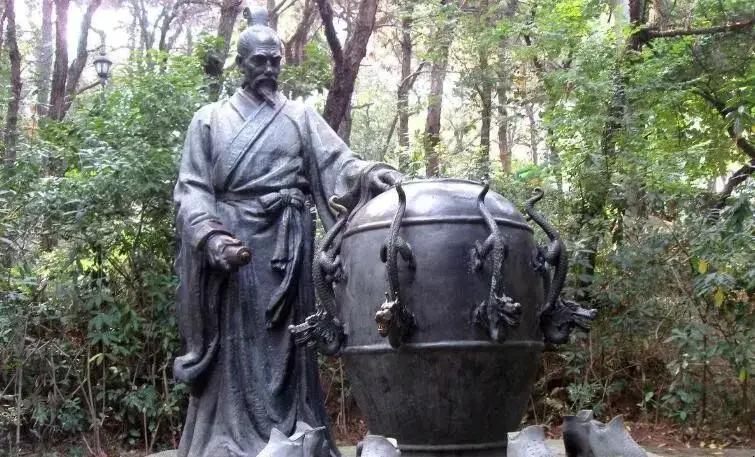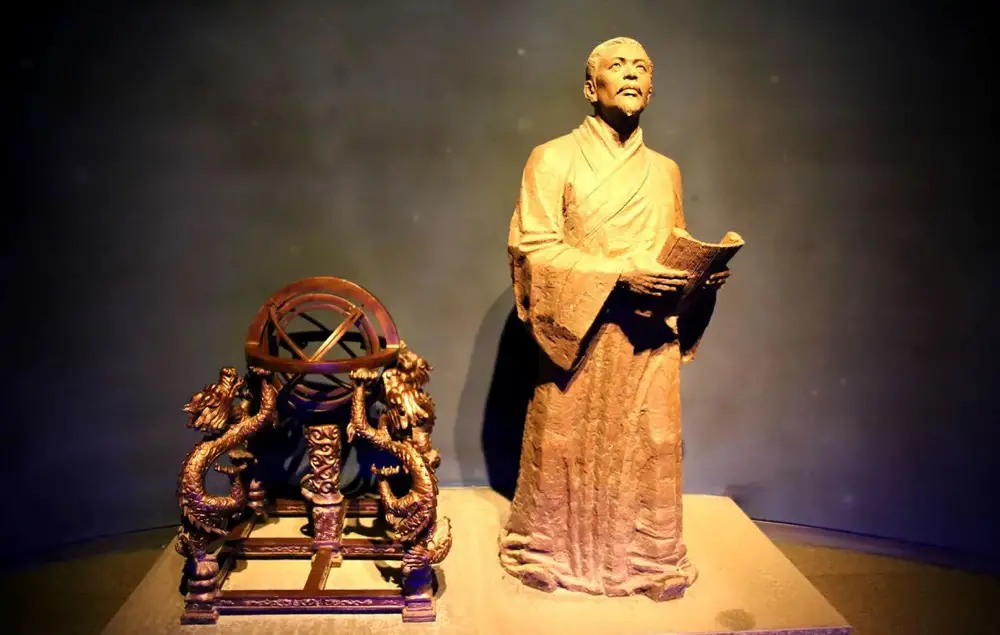The period of the Han dynasty 206 BCE – 9 CE, then 25–220 CE in ancient China is seen as a period when the growth in premodern Chinese science and technology peaked. Some of the great inventions that we know consider basic include the wheelbarrow, the adjustable wrench, and the horse-riding stirrup. Others that can into their full potential much later include the invention of paper, the suspension bridge, deep drilling, and the blast furnace. The invention of the seismograph is attributed to Zhang Heng in person. So, who is he?
Who Is Zhang Heng?

Zhang Heng was a revered Chinese intellectual, scientist, and statesman who lived during the first century CE. The term polymath fits this man very well. He was knowledgeable and could apply his proficiency to different situations. He was an accomplished artist, poet, mathematician, astronomer, inventor, seismologist, hydraulic engineer, cartographer, geographer, statesman, and literary scholar. Zhang Heng was also schooled in Confucianism, which shaped his value system for political philosophy and moral conduct. Zheng made contributions that had a lasting impact on Chinese literary traditions, intellectual development, and technological advancement.
When Was Zhang Heng Born?
Zhang Heng was born in 78 C.E. in Shiqiao town, Xie County in modern-day Nanyang city, Henan province, formerly known as Nanyang Commandery. His family was notable but not very wealthy. Emperor Zhang of Han, also variably known as Chang-ti, was the Eastern Han dynasty ruler at the time of his birth.
When Did Zhang Heng Die?
Zhang Heng died in 139 CE in the capital city of Luoyang. Not much has been written on how he died, only that he had gone back to the city from retirement to serve under the Imperial Secretariat. He died while still in office.
Where Did Zhang Heng Live?
The records show that Zhang Heng lived in the town of Xie until he was 16 years of age. He left home in 95 CE to travel and pursue his desire for knowledge. Heng initially travelled to the Han city of Chang’an, where he studied culture, history, and current affairs before heading to Luoyang to attend the Taixue school of learning. He spent several years here studying literature and improving his skills in writing. Zhang Heng spent about 7 years between Chang’an and Luoyang until he was 23 years of age.
In 101 CE, he returned home to Nanyang. This time, not as a restless teenager anymore, but as a junior official, serving as the master of documents in the administration of Governor Bao De. His official title was “Officer of Merit in Nanyang”. He would go on to live in Nanyang for the next 10 years until Bao De left office in 111 CE.
In 112 CE, Zhang was summoned to the court of Emperor An in Luoyang. Here, he became the court historian. He was to spend the next 14 years until 125 CE living and working in Luoyang in different progressive roles, including that of Chief Astronomer between 115CE and 120CE at Emperor An’s court.
In 126 CE, under the new Emperor Shun, Zhang was reassigned to the Chief Astronomer role. This and other Palace Attendant roles extended his stay in Luoyang for an additional 10 years.
In 136 CE, Zhang pulled back from his post under Emperor Shun and was appointed Chancellor of Hejian (modern-day Hebei), where he lived for 2 years before he retired from official duties in 138 CE and went home to Nanyang.
However, a few months into his retirement, Zhang was recalled to serve in the Imperial Secretariat and moved back to the capital, Luoyang. He died in 139 CE while still in office.
What Did Zhang Heng Do?
Zhang Heng’s life and works can be viewed from three dimensions: his work in service of the Emperor and government; his contribution to science; and his work in literature and poetry.
Zhang Heng started as a junior officer at the age of 23, serving in his home commandery for 10 years before being called to the emperor’s court. He served as a court gentleman and a palace attendant in the Imperial Secretariat. He was later to hold the office of Chief Astronomer, become the Chancellor of Hejian, and return to the service of the Imperial Secretariat later in life.
As a scientist, Zhang Heng remedied the computation of the area of a circle by giving a “pie” value that is closer to what we use today. He is also credited for advancing theories, such as the positioning of the earth around the sun and the universe, the categorization of the stars, and the concepts of solar and lunar eclipses. His work in cartography formed the basis of the use of grids for navigating the earth’s surface by later cartographers. He also invented a water-powered armillary sphere and a seismoscope.
When it comes to poetry and literature, Zhang Heng is said to have written more than 20 works. His poetry covered topics such as politics, academics, leisure, love, and erotica. His notable works include “Four Stanzas of Sorrow,” “Bones of Zhuang Zi,” and “Two Capitals.” In “Thinking About Mysteries,” he describes his astral journeys. “The Fu” is his critique of previous Han Dynasty Emperors.
Zhang Heng Wife.
There is no mention of Zhang Heng having ever been married, nor of him having any offspring. Very little information is available about Zhang’s personal life. Other than his grandfather, Zhang Kan, who is mentioned by name, we know little about his personal life.
What Did Zhang Heng Invent?

The level of Zhang Heng’s contribution to engineering works and inventions that occurred during the Eastern Han dynasty is unknown. This is because of challenges in accessing, interpreting, and collaborating on information in records from the era. However, there are at least two inventions that can be conclusively attributed to Zhang Heng: the water-powered armillary sphere and Zhang’s seismoscope.
Zhang Heng is the first person ever known to have used a hydraulic motive power to turn an armillary sphere, which is an astronomical instrument that represents the celestial sphere armillary. The invention is recorded in a chapter from his book Hun, written in 117 CE. Zhang’s invention had significant effects on Chinese mechanical engineering and astronomy in later years. His work in this area is attributed to Chinese water clocks and the finding of the escapement mechanism in the 8th century.
Arguably his most renowned invention was the seismoscope, which he presented to the imperial court in 132 CE. Zhang Heng’s device was able to record earthquake occurrences, including the general direction where the quake was coming from. Impressively, his device was at one time able to detect a quake that was more than 400 miles away and had been indiscernible by human senses.
Aside from these, Zhang Heng is credited with improving and contributing to several engineering works invented by his predecessors and compatriots. These include the Chinese odometer, the south-pointing chariot, and the additional tank for inflow clepsydra.
He is also recognized to have founded the basis of later works, such as the use of rectangular grid reference in cartography and proposing the concept of the lunar eclipse that the Chinese calendar was to be based on.
Conclusion
Zhang Heng was a remarkable scientist whose influence transcended his time. He was an astute administrator too, known for being incorruptible. Although some of the inventions attributed to him have been called into question, several other things, including a lunar crater, an asteroid, and a mineral, have been named in befitting recognition of his contribution to science.